#science!
Text

In more good news, the Sir David's long-beaked echidna, made an appearance on an expedition team's trail cams! This species hasn't been documented in over 60 years, and was thought to be extinct. This is also the first time a live specimen has been photographed/recorded, as the species was only identified in 1961 by a single dead specimen.
3K notes
·
View notes
Text
So apparently on December 11th NASA tested using lasers to send information from space to Earth and this was the video they used:
youtube
The first video to be sent from space to Earth via laser is of an orange tabby cat chasing a laser pointer. His name? Taters.
More information:
#nasa#outer space#astrophysics#physics#science#cats#animals#science!#ALL HAIL TATERS#i love humanity so much#ofc it was a cat video#Youtube
2K notes
·
View notes
Text
Alt text description included:

Inspired by Hell's House of Horrors ( @hellenhighwater ), I have acquired this item of furniture from my local thrift store. My artistic and mechanical skills are at minimal die codes regardless of the gaming system. I need to replace some handles and the baseboard inside the hanging garment side.
I am now taking good and bad advice for additional things I could do to weird it up!
Difficulty: no electronics.
Edit to clarify: I did not pay anywhere near that $180 price. That was probably someone's really lofty ambitions back before a potential buyer first noticed how many repairs needed to be made.
#art#project cheery subjects please#science!#weird furniture project#please reblog with your ideas!#This is going to wind up in an interior room. No windows.#alt text describes image
741 notes
·
View notes
Text
Did you see @bawdiestrhymester doing God's work and quantifying the Captain's bounces?
Hurrah for a fellow data scientist, we hope they don't mind that we couldn't help but graph the important findings 👻❤️

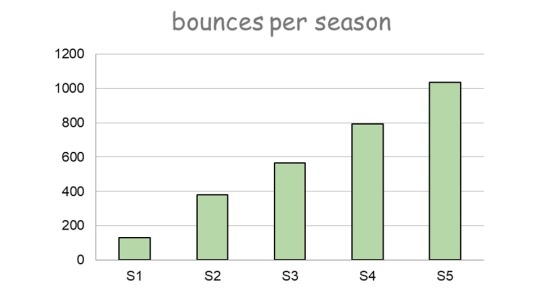







#data scientists at work again#bbc ghosts#science!#the captain#bouncy man#mooseidiot crochets#and Does Science
465 notes
·
View notes
Note
Do you know why dogs do that little exhausted sigh when they lie down even when they haven't really done anything that particular day?
I, too, make exhausted little sighs when I flop down and am suddenly extremely comfy!
But, okay, here's what super interesting. I didn't want to just give you a flippant answer, so I started looking up if sighing is a behavior in other species than humans. Because it's always worth keeping an eye out for accidental anthropomorphism. Turns out? The science on sighing is fascinating. Stay tuned for intense nerding out, and maybe a bit more of an answer.
First off, we gotta know what a sigh is.
"The sigh is a deep augmented breath with distinct neurobiological, physiological, and psychological properties that distinguish it from a normal eupneic breath. Sighs are typically triggered by a normal eupneic breath and are followed by a respiratory pause, which is referred to as 'postsigh apnea.'"
In non-jargon, that definition means sighs are a deep breath with a different pattern to it than normal, easy, regular breathing. "Augmented breaths" are frequently used as a synonym for "sighs", and the best definition I found is that "they comprise prolonged inspiration and increased tidal volume followed by a respiratory pause and several seconds of faster breathing. So a longer than normal inhale where you take in more air than normal, then an exhale, and then pause before breathing in again. Oh hey, look, I found a graph!

The graph is super well labeled, but just to be clear: each cycle of the red line is a normal breath, where what's being tracked is the movement of the chest wall. The part where the vertical blue bar is, that's the cycle with a sigh. The red line spikes really high (during inspiration, or breathing in) at that blue patch, and for longer than the normal period of a breath. See how it's almost like two inhales on top of each other - a normal slope and then another upward spike? That's the "augmentation" of the normal breath, almost a double inhale without breathing out in-between. Then, after the red line drops (on the exhale) there's a flat bit. That's the respiratory pause, which the period after the sigh where you wait before you inhale again.
Apparently people have been tracking sighing scientific for like, over 100 years. The first record of it in academic literature was in 1919. And we know some really cool stuff. All humans sigh spontaneously. Even babies sigh! They do it every few minutes, whereas it's less frequent but still pretty regular in adults: one study found about once every five minutes, or twelve sighs an hour.
Okay, but why do we sigh? We only sort of know, because there's a bunch of different things that have to be studied to answer that question. The direct physiological aspect of it is the most well known at this point. You've got lots of little sacs lining your lungs, called alveoli, that facilitate gas transfer from the air you breathe into your blood. They make sure oxygen goes in and carbon dioxide gets breathed out. But sometimes they collapse and deflate, which prevents them from doing their job. When you do a big sigh, the air quantity in your lungs ends up being double that of normal, which inflates them again. So sighing is a way of doing lung maintenance, in a sense.
But there's so much more going on when you sigh than just that! This is the stuff researchers are still working on. They've got some pretty solid conclusions to start, but they're very emphatic that there's a ton more to learn.
Basically, the main hypothesis right now is that sighing functions as a "reset" for your internal state when it's out of balance. People sigh more when they're acutely anxious or stressed, are anticipating a negative outcome like a shock or seeing a negative image, or have chronic anxiety, PTSD, or panic disorders. Higher sigh frequency is also associated with pain: people with chronic low back pain sigh more, and how much they do correlates with how high their pain rating is at the time!
Another aspect of sighing is that it's frequently associated with periods of relief. Studies have noted that people sigh when they're able to relax following tension, like if they're interrupted while trying to do something really mentally taxing, when they finish a task that took a lot of attention for a long time, or if a negative stimulus stops/goes away. The reason behind that is actually thought to be why people sigh so much when they're upset or in pain: sighing doesn't just signal relief, but actually cause it! Some studies have found that people experience a temporary reduction in muscle tension right after a spontaneous sigh. (Unfortunately, that doesn't seem to also happen when you sigh on purpose.)
Sighing is also thought to facilitate behavioral and emotional transitions. The frequency at which someone sighs changes even just when they transition from sitting to lying down. People frequently sigh right before they fall asleep or start to wake up. One study found that people sigh more frequently when they go from a situation of being unable to anticipate what's next to a situation where they know what the outcome will be - regardless of if that outcome is going to be negative or positive! That led the researchers to hypothesize that sighing functions as an emotional reset from states of high internal arousal (a word which here means "the state of feeling awake, activated, and highly reactive to stimuli.") So sighing might not just bring relief when something really intense ends, but it might also help people prepare for upcoming stress.
Basically, researchers think that sighing may contribute to what they call "psychophysiological flexibility." That means that sighing helps keep someone in a physiological and emotional state that matches the situation they're in, and helps the body and mind adapt quickly when something changes. They noted that these types of transitions may involve "anticipatory, activation or recovery responses." In other words: they think spontaneous sighing is relevant not only when you're worried about encountering a leopard in the bush, but when you have to hide from the leopard you tripped over, and then also when you're calming down after the leopard got bored and left.
There's a whole bunch of research left to do about how exactly spontaneous sighs do what they do, but there's also a whole other aspect of the behavior that hasn't really been studied yet: their social function! In humans audible sighing is a salient social signal. (The researchers said the part of the paper addressing this that it is a "lay belief" that sighs have a "communicative function to convey emotions," which makes the whole thing feel like it was written by aliens observing humans from afar). But they did note that sighs for social communications may be totally different from other types of sighs, since the exhalation is often very exaggerated and doesn't always occur in tandem with that "augmented" inhale pattern that spontaneous sighs have.
Okay. So. I've been a nerd forever, but what about doggo sighs? Why do they occur? Obviously, the research doesn't give us a direct answer. The majority of the behavioral / situational research on sighing has been done on people, not animals. But it's pretty well documented lots of animals sigh (it might even be all mammals, I just don't have a citation for that). And some of the studies that have been done on animals indicated that they, too, sigh in relief when negative situations end or unpleasant stimuli go away.
Let's go back to my joke at the beginning of this book I've written. My first instinct was to be like "who doesn't sigh in relaxation when they finally get a chance to rest their bones?" That totally matches what's in the research: getting a chance to rest after activity is often both a behavioral transition and an emotional one, and if there's any physical discomfort being experienced, physical rest is often is a relief.
It seems fairly probable that dogs sigh when they lay down for at least one of those reasons. I can't prove that hypothesis, but it tracks with what the science says so far. The situation you described meets the main identified criteria for sighing: there's the physical transition of laying down, the behavioral/emotional transition of being ready for a period of low/no activity, and the possible relief of pain or discomfort that comes with laying down. We don't have any any evidence (that I was able to find) of species that sigh for other reasons, or sigh in situations that don't meet those criteria. We don't know for sure that this is accurate - this isn't fact, simply my educated guess. But since sighing seems to help muscles relax and relief discomfort, it seems reasonable to me that a good old sigh after the relief of laying down would make the transition to a resting state feel even better.
Sources:
Effects of the hippocampus on the motor expression of augmented breaths
Brainstem activity, apnea, and death during seizures induced by intrahippocampal kainic acid in anaesthetized rats
The Integrative Role of the Sigh in Psychology, Physiology, Pathology, and Neurobiology
Sigh rate during emotional transitions: More evidence for a sigh of relief
The psychophysiology of the sigh: I: The sigh from the physiological perspective
The psychophysiology of the sigh: II: The sigh from the psychological perspective
Affect Arousal
UCLA and Stanford researchers pinpoint origin of sighing reflex in the brain
#science!#dog behavior#sighing#sighs#I want to emphasize this is a hypothesis based on the existing body of research and that I am not an expert in this field#there are times where it is reasonable to look at the existing literature and create theories based on a synthesis of their findings#but this is not something to repeat as known fact#and that differentiation is extremely important in this sort of forum
3K notes
·
View notes
Text
Chicken Science Swednesday: Chicken as a liquid
Many people are unaware that some chickens, when exposed to direct sunlight, become puddles:
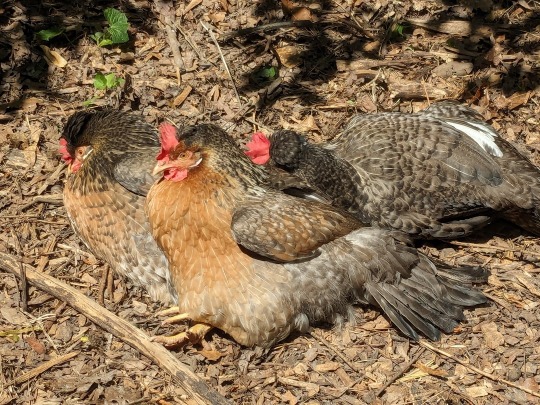
There is no reason to be alarmed, as this process is 100% reversible. Indeed, most chickens will return to their solid form within a few minutes of melting, without any external assistance.
Don't worry if you were unaware of this. Even chickens who are not currently puddles are often confused by these encounters:

#the girls#camilla#scooter#beaker#skektek#what are chickens#we just don't know#chickenblr#chickens#backyard chickens#cream legbars#olive egger#easter egger#science!
197 notes
·
View notes
Text
Every so often (ever since I read that book about Catholic scientists) I think about the guy who discovered the cause of Down's Syndrome and get very sad.
Jérôme Lejeune did his research because he loved children with Down's Syndrome! He wanted to help them! Discovering the genetic cause was a huge breakthrough, and helping to develop the prenatal test was intended to give parents a chance to prepare for caring for a child with Down's Syndrome.
And then his test was used to kill children with Down's Syndrome.
He got the highest honor in genetics because of it, and he used his acceptance speech to tell the world's assembled scientists that their use of his test was evil. Which made everyone mad and destroyed his chances of winning a Nobel. But he stood for life. He stood for the disabled. He stood for the children. Even at the cost of his career. Because his work intended to save the children he loved was being used to destroy them and how do you deal with that? It just breaks my heart every time I think about it.
#pro life#science!#catholic things#this is extremely vague because i'm summarizing a children's biography i read months ago#but it's more about the emotions than the details and i need to make you sad with me
3K notes
·
View notes
Text



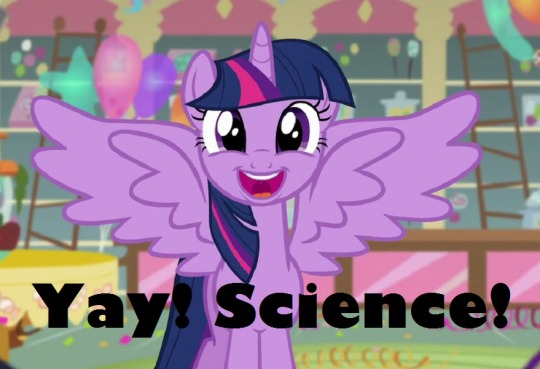
118 notes
·
View notes
Text

Research... by Gunim8ed
84 notes
·
View notes
Text


If I had to guess, these are Jedi captured after Order 66 being used as guinea pigs, hence all of the security, or Palpatine clones in development? Related to the 'tomb' from Kenobi maybe? Were those Jedi used in Hemlock's experiments? 🤔 Clones would not have an M count to begin with, but Jedi did, so maybe Hemlock's trying to get their conscious into a clone body without the M count diminishing? I hope we find out and it's not just a Pulp Fiction briefcase light mystery. Lol...

#tbb spoilers#the bad batch spoilers#tbb s3 spoilers#the bad batch#tbb#project necromancer#kenobi#star wars#star wars spoilers#the bad batch s3 spoilers#tbb s3 speculation#the bad batch season 3#science!
84 notes
·
View notes
Text
OK, this is incredible. Voyager 1, which left the solar system back in 2012, got what I think is roughly the equivalent of a complex software patch over 15 billion miles away and now will be able to resume sending status/engineering data back to Earth. And now that NASA's figured out how to do that, they'll be able to enable it to resume sending scientific data as well.
Think about what kind of computing power was available in 1977 - what was available and able to fit on an interstellar probe. Not only is it still trucking along, it's able to receive a system update to fix a failure in its data processors so it can keep sending data, again, from outside the solar system.
37 notes
·
View notes
Text

contender for funniest quote of all time
#science!#this article is about the eclipse btw#solar eclipse#astronomy#animals#science#check my reblog for info on citizen science during the eclipse!
2K notes
·
View notes
Note
hey! i just read your post about how eugenics cooned the term "normal" and how it is used nowadays and i just wanted to ask if you'd happen to have some sources to read into. as a scientist who uses terms like normal and standard deviation regularly i think this is a really intersting fact and I'd love to learn more about it :)
So I got that from a paper I read a couple of years back when a friend of mine was doing a PhD into depictions of disability in literature from the South Wales coal belt, so yes there is definitely a good academic source for it. Can I remember which? No.
But I will ask her! She ought to remember, in theory
251 notes
·
View notes
Text






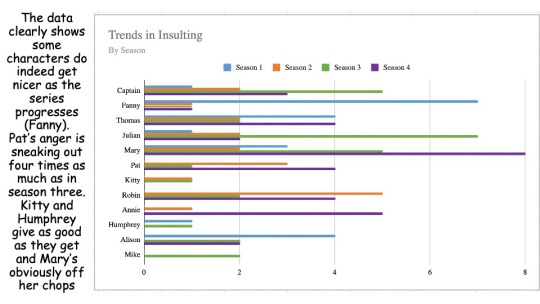
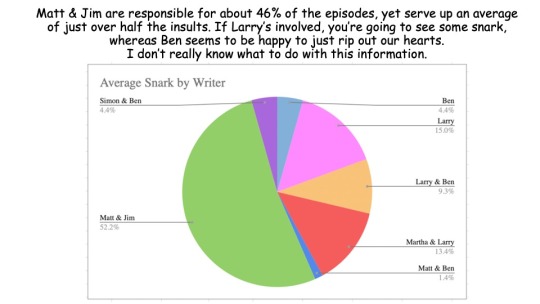
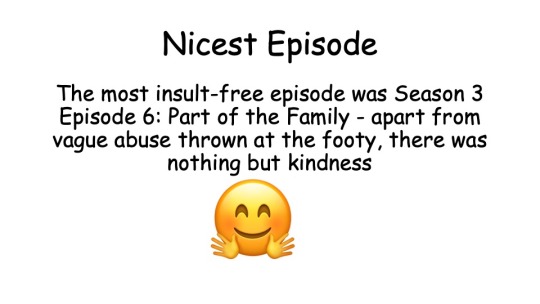

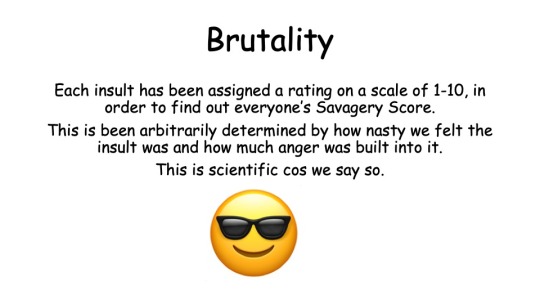
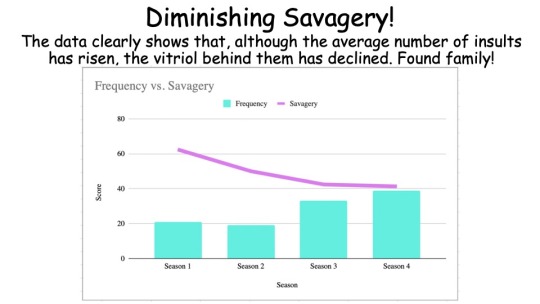

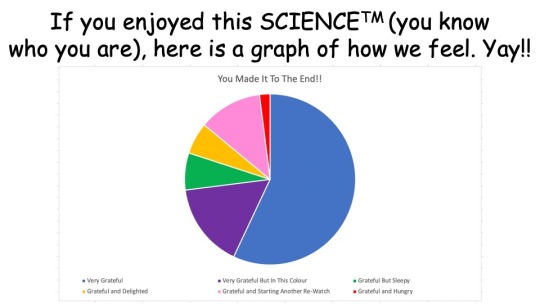
Ever wondered whether the inhabitants of Button House are getting nicer to each other? Here's a VERY IMPORTANT SCIENCE to answer the question probably nobody asked
#who is the biggest bitch?! the answer revealed!#bbc ghosts#science!#important data#mooseidiot crochets#while noting down direct insults!#multi tasking#graphs#i spent more time on this data than i do in my job#i didn't see the fanny/alison alignment coming#six idiots
905 notes
·
View notes
Text
Happy Moon Landing Day!

On this day, for the first time in human history, some guys went up and got absolutely silly on a big space rock that *wasn’t* the Earth!
And that’s really cool.
#moon#moon landing#moon landing day#holiday#kinda sorta#IT SHOULD BE A HOLIDAY#science!#history#humanity
143 notes
·
View notes